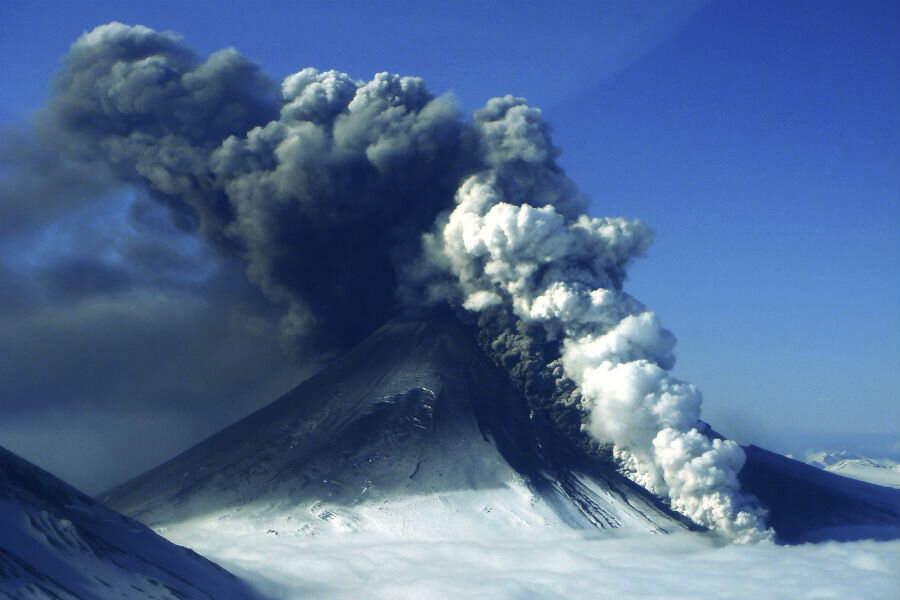Is Alaska's Mount Pavlof volcano about to erupt once again?
Loading...
The Alaska Volcano Observatory has noted increased seismic activity and steam emissions this past week from Pavlof Volcano, raising the volcano's alert level.
The volcano, located on the southwestern end of the Alaska Peninsula, is one of the most active in Alaska, with more than 40 recorded eruptions, according to the observatory. The volcano erupted most recently in May, and in March an eruption sent ash plumes around 40,000 feet above sea level.
Eruptive activity could occur with little or no warning, the observatory notes, and scientists are planning on continuing to closely monitor the volcano. Pavlof's current activity, however, is normal, geophysicist David Schneider told Alaskan radio station KUCB.
"Pavlof is one of those volcanoes that can erupt without very much in the way of precursory activities," he said. "It’s very easy for the magma to arise in the volcano and make it out. So even subtle signs of unrest we think it is prudent to increase our alert level."
The May eruption of the volcano marked the first time in twenty years significant ash-fall was recorded on the ground, as the Alaska Dispatch News reported. Nelson Lagoon, a village of 39 people 55 miles northwest of the volcano, was hit with one-eighth to two-thirds of an inch of ash, the Dispatch News reported.
"It turned everything black, the rooftops, the fuel tanks, homes," Barrett Taylor, a village public safety officer in Nelson Lagoon, told the Dispatch News.
The March eruption led to the cancellation of a number of flights, as the Associated Press reported. Pavlof, a 8,261 foot mountain, is located 625 miles southwest of Anchorage in an area that sees a high volume of airline traffic.
"It's right in the wheelhouse of a lot of flights crisscrossing Alaska," geologist Chris Waythomas, of the Alaska Volcano Observatory, told the AP.
The volcano erupted March 27, emitting an ash cloud that grew to 37,000 feet and was spread by wind more than 400 miles east into Alaska.
Alaska Airlines cancelled 41 flights throughout the state due to the eruption, which affected around 3,300 travelers.
"We just simply will not fly when ash is present," Alaska Airlines spokeswoman Bobbie Egan told the AP.
Volcanic ash can shut down jet engines, as it did when a December 1989 eruption of Alaska's Mount Redoubt erupted with an ash cloud of 150 miles that caused the failure of two engines of a KLM flight. The flight was carrying 231 passengers to Anchorage, the AP reported, and fell two miles before the pilots restarted the engines and landed safely.






